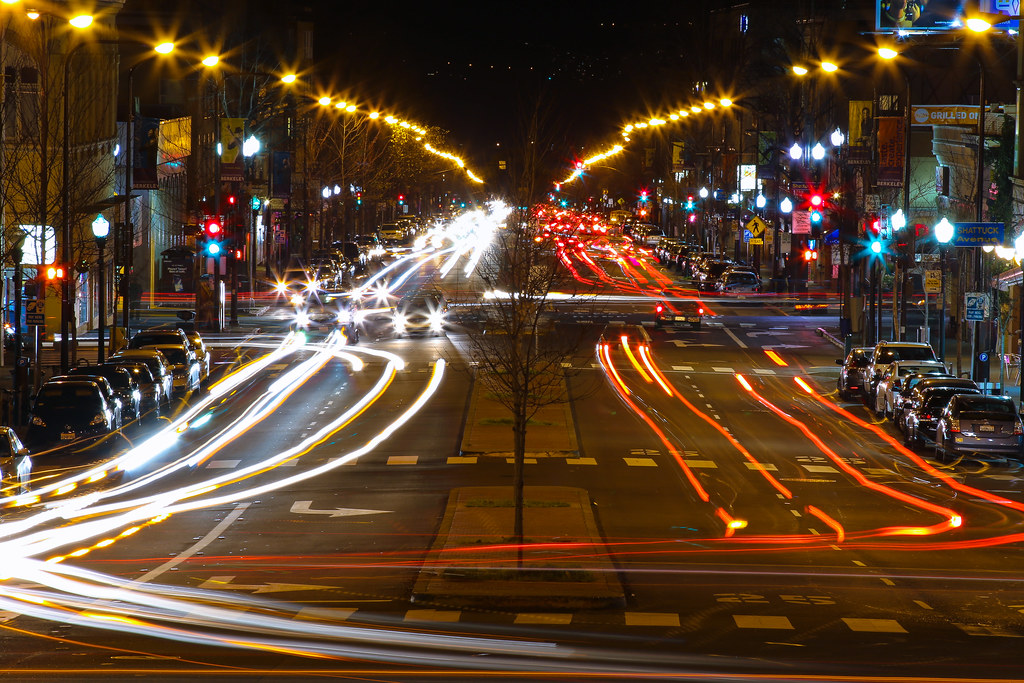How Density Shortens Commute Times in the US and Mexico

A new study by Guerra and Li (2021) compares 100 of the largest urban regions in the United States and Mexico. Their models mapping the transportation choices and socioeconomic trends from a sample size of five million commuters have important implications for the future of urban land use policy and economic development.
Key takeaways:
- In general, American and Mexican commuters in more densely populated, central neighborhoods — and critically, in those with less road space — tended to have shorter trips, and were less likely to commute using a personal automobile.
- Despite this general pattern, city residents in the United States are more reluctant to adopt a modal shift away from driving than their Mexican counterparts: car trips were stubbornly consistent in the US across the economic and geographic spectrum.
- The report finds: “Mexico’s urban commuters may be substantially more likely to change travel behavior in response to differences in income, urban form, or transportation supply than in the US.” But at the same time, “population density is significantly correlated with workers choosing active modes over private vehicles in the US, but not in Mexico.”
Previous research covered in The Homework examined the transportation choices of residents who moved to randomly-assigned homes in San Francisco’s affordable housing lottery. Like that study, Guerra and Li (2021) find strong evidence that urban transportation choices are largely a function of the built environment. This also partially undermines the opposite theory—that the urban form reflects the sorts of land use that people shop around for when they freely choose where to live—often known as the Tiebout hypothesis.
The United States and Mexico have a largely urban populace. The commuters in their 100 largest urban areas represent two-thirds and four-fifths of their workforce, respectively. Equipped with a sample of five million unique commuter patterns, the researchers observe the relationships between wealth, class, cars, and housing.
At the heart of their findings lies a major key to climate policy: “Mexico’s urban workers live in households with a sixth of the income of their US counterparts. They also live in six times more densely populated neighborhoods and have substantially better transit options.” Clearly, Americans do not self-select for a country where driving is the norm; rather, the norm of private car travel is so pervasive even in urban cores that Americans are overall more likely to drive.
As Guerra and Li explain: “A large share of Mexico’s urban population commutes by transit (50.3%), private vehicle (31.2%), and active modes (18.4%)…small changes in the cost or convenience of any given mode can potentially have large impacts on travel behavior. In the US, where 90% of workers commute by car…Doubling the numbers of workers who walk or bike to work, for example, would only reduce driving commutes by around 3.6%.” These findings suggest a sort of chicken-and-egg problem. Since Mexican cities are already relatively denser, wealthier residents are less likely to commute by longer car trips even as they are more able to afford expensive mode choices.
However, the authors caution that this may be reflecting macroeconomic trends rather than local planning policies: “This inconsistency,” they explain, “may relate to the scale of the urban measurements, the small number of urban-level observations, or other factors.”
Indeed, when the authors hone in on neighborhood-level patterns, population density of a neighborhood becomes a stronger determinant of shifting from car travel to biking and walking in the United States—but not in Mexico. This is because in less-dense suburban, exurban, and rural areas, Mexican workers are already biking and walking more than their American counterparts. “In metropolitan Mexico City, for example, 20% of suburban workers commute by non-motorized modes compared to 16% in the city proper,” the authors note. However, they also caution that Mexican suburbs are often just as dense and diverse as the urban core, and often contain more rowhouses rather than detached single-family dwellings.
While density increases the modal shift from cars to “active” transportation in the United States, there is another variable that increases car travel, one almost by definition diametrically opposed to housing density: the amount of urban space devoted to roadways.